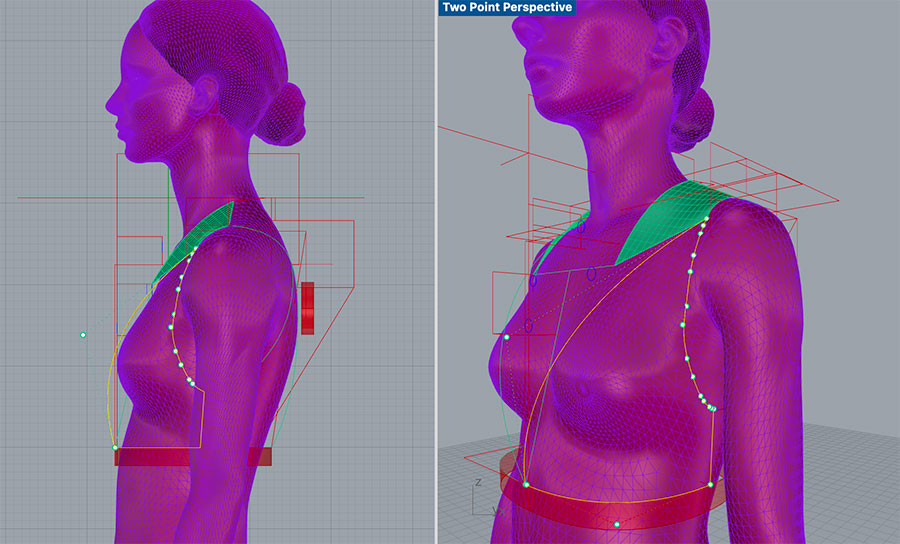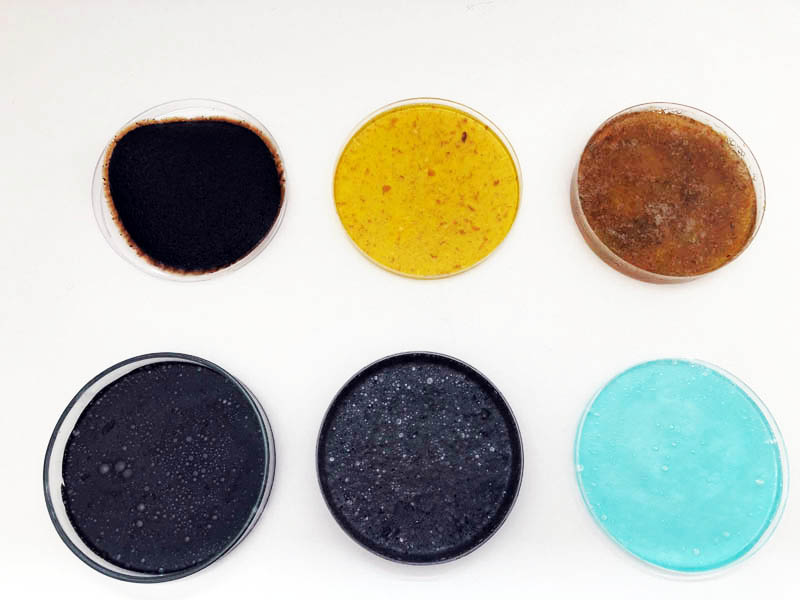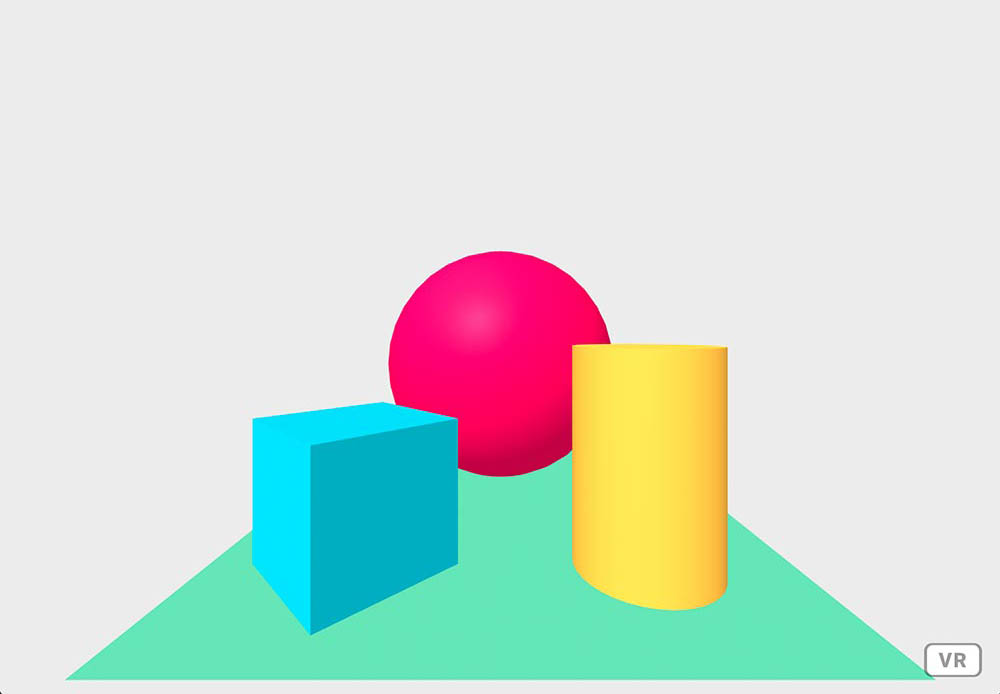Week 17 Invention, Intellectual Property and Business Models
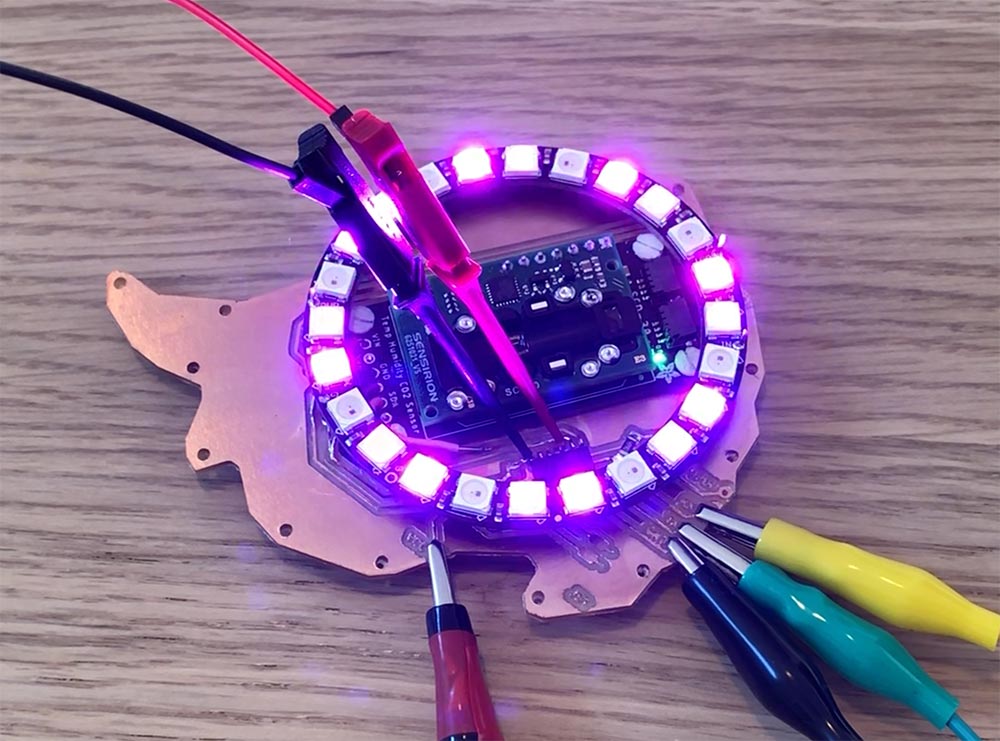
This is the last week before the final project presentations! In the summary below, you can jump directly to topics.
Summary
After acing through the technical assignments of Fab Academy, the last two weeks have a lighter load so we can focus on the final project. But this does not mean that they are less important! This week is all about defining next steps to take our final project (or future endeavors) to the next level. Topics include invention, intellectual property and business models. It is truly inspiring to learn from Neil, who walked these paths many times with various inventions and in a variety of contexts.
Assignments
This week, we have the following tasks:
- Develop a plan for dissemination of your final project
Prepare drafts of your:
- summary slide (presentation.png, 1920x1080)
- video clip (presentation.mp4, 1080p HTML5, < ~minute, < ~10 MB)
- and put them in your root directory
Learning outcomes:
- Formulate future opportunities
FAQ from the Fab Academy evaluation page: What does “dissemination plan” mean? Answer: It means how will you raise awareness of your project amongst the target group. The dissemination plan might answer questions such as: who is your project for, how is it funded, is there a license you chose or something else to protect intellectual properties of your project, is there a business plan, how would you fund scaling up, etc.
Presentation slide and video draft
Here is a first draft for the presentation slide. It’s the ugliest slide I’ve ever made, and with my perfectionism I would usually never publish this in the ‘normal world’ outside of Fab Academy but I missed a full week due to health issues. Not the best timing before finishing a final project! Luckily things are going better now :)
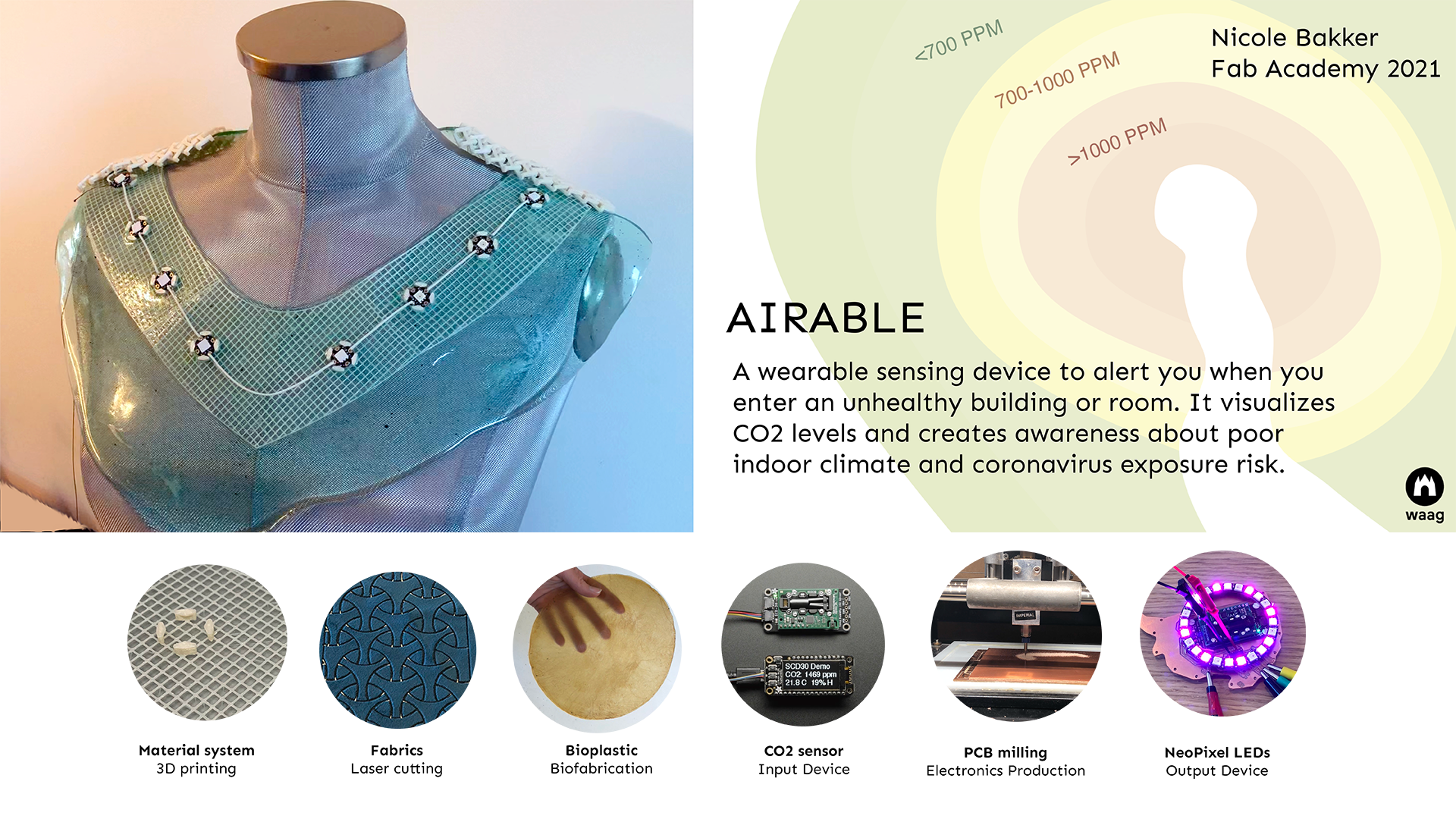
And here is a first version of the video:
This week is the final stretch of Fab Academy! Lots of design finalization, soldering and biomaterial production! I still have to complete the full setup and include final shots of the working system. Unfortunately I dropped the PCB so most traces were ripped off and the entire sensor broke down.. Will remake the PCB and update this to my final project page.
Project dissemination
As listed in week 1, my objective for this final project is not to create a product that can be commercialized and mass produced. Instead, this is a one-of-its-kind artistic exploration in which ancient and modern technologies are merged to create awareness about our environmental conditions and the impact of CO2.
Who is your project for?
People who might suffer from the Sick Building Syndrome due to poor ventilation and want to improve their health by monitoring indoor air quality, CO2-levels to be precise. This problem has more impact on our health and productivity than initially thought and I’d like to create a platform for debate through this wearable design.
How is it funded?
Showcase grant? Artist fee? I’m new to this scene so I’m not familiar with business models in more artistic circles. Perhaps I can look at an innovation grant.
How to protect IP?
By choosing a Creative Commons license. I’m a big fan of open source development and sharing. However, at this point I’m absolutely 100% done with not being credited. In academia I have too many bad experiences, from people publishing a conference paper behind my back (I led this research project for the state and municipality, which was a spin-off of my book published two years earlier) to others repeatedly taking credit for my ideas.
Not sure if the following note is related, but since there was a recitation on Diversity, Equity and Inclusion I think it’s worth to mention. During the MIT writing exam we had to read and summarize a couple of research papers on the topic of gender equality in academia. I don’t recall what the exact papers were, but a simple Google Scholar search (or DuckDuckGo, whatever you prefer) to “gender gap academia” or even “women academia” shows that this is still an issue in the 21st century. Unfortunately I can relate to many of the issues cited in these papers:
- Not being credited, or credited as second-third-fourth-last author despite putting most of the work into the paper
- Lower research output (being burdened by administrative tasks)
- Harassment
- Hidden pay differences
- Etc.
It is long overdue to recognize and change this, particularly in engineering disciplines. As a human being I just want to focus on research and not on all the “stuff” around being a woman. So, that’s out. Let’s shift back to the actual project ;-)
Because the aim of this final project is to create awareness about indoor air quality, I want it to be widely shared. And I’m planning to put some of my design files up on Thingiverse, for others to download and remix. However, attribution is important. Therefore I choose the Attribution-NonCommercial-ShareAlike 4.0 International (CC BY-NC-SA 4.0) license.
Business plan?
Not applicable for this project.
How to fund scaling?
Not applicable for this project.
Notes from lecture
In the section below I summarize a couple of notes from Neil’s lecture, for future reference when the time is ready.
Invention
During lecture, Neil shared this really cool insight: ‘Ready-fire-aim’ instead of ‘ready-aim-fire’.
Patents
Neil provided an overview of the patent filing procedure:
Step 1: Search. Reference the prior art. Don’t be discouraged by other people’s work. Here are the places you can find US or EU patents.
Step 2: Disclosure. One way is to keep it a secret. The second strategy is defensive: IBS systems journal: disclose to prevent anybody else from patenting.
Step 3: File a provisional patent. This is valid for one year. You can only do this in the US.
Step 4: File a full patent. Becomes public. What matters, are the claims. Here you can do this for the US and EU.
Takeaway: it’s not just that hard to get a patent. Example of two nasty ones: faster than light, free energy.
Step 5: Decide on jurisdiction. The rules are:
- Novel, non-obvious, useful
- First to file versus first to invent
- Maintenance: fees to keep the patent
- Litigation: there is no patent police. It only gives access to the legal system. Nobody is going to defend it for you.
It’s only useful, if you’re able to define infringement. And there has to be a barrier to infringement, for example, a large investment needed. Two cases in which it is attractive to patent:
- Large investments needed (such as medicines)
- Investors like patents, so it could be useful for startups
Next, on to the topic of copyright. According to Neil an under appreciated way of protecting intellectual property.
Copyright
Easy to get, lots of commercial relevance. They are secured on creation: declaring the copyright gives you the copyright. Reproduce, modify, distribute, perform, display. How to license it? At copyright offices in the US and EU.
There can be substantial revenue in copyright for the stuff you do in a Fab Lab. Textbook example of the Red Hat acquisition.
Trademark
Issue with trademarks is that they are only valid if you identify them as the trademark and defend them.
- You have to write TM behind your brand name all the time
- You have to keep track of other people/organizations copying your trademark
What happens intend to sell copyright protected material (i.e. CAD files)? What type of license you do need? Any good platforms for handling this? EULA gives the rights to the end-users. Open source hardware licenses: OHWR.
Business Models
The last part of lecture is about business models.
Income
Many of the successful businesses come from selling the thing. But there is more. Example of an organization with an alternative business model: arm. They come up with design, business is just licensing designs.
Rules of thumb:
- Pain. Somebody has a problem and what you’re doing makes that pain go away. Figuring out who’s in pain.
- Pushing on strings. You can’t push on strings, but you can pull on it. E.g.: You need help with meeting employment thresholds. This could be a solution.
A great way to have income is to be non-profit. Sustainable income. It can be beneficial to be non-profit to tap into certain kinds of funding.
A purchase commitment is a great way to generate income. Go back to get a conventional bank loan. Bootstrapping can be harder, sell one, reinvest.
Business lifecycle:
- (failure of) business plan
- (need for) management team
- (problems in) scaling
- (pressure for) exit
- (limitations of) founders
Between 50-100 people, you get theft, harassment, etc so you will need a Human Relations department.
Wrapping up
This was an exciting week! There still is a lot of soldering and assembly to do for my final project, so I’ll quickly get back to that!

